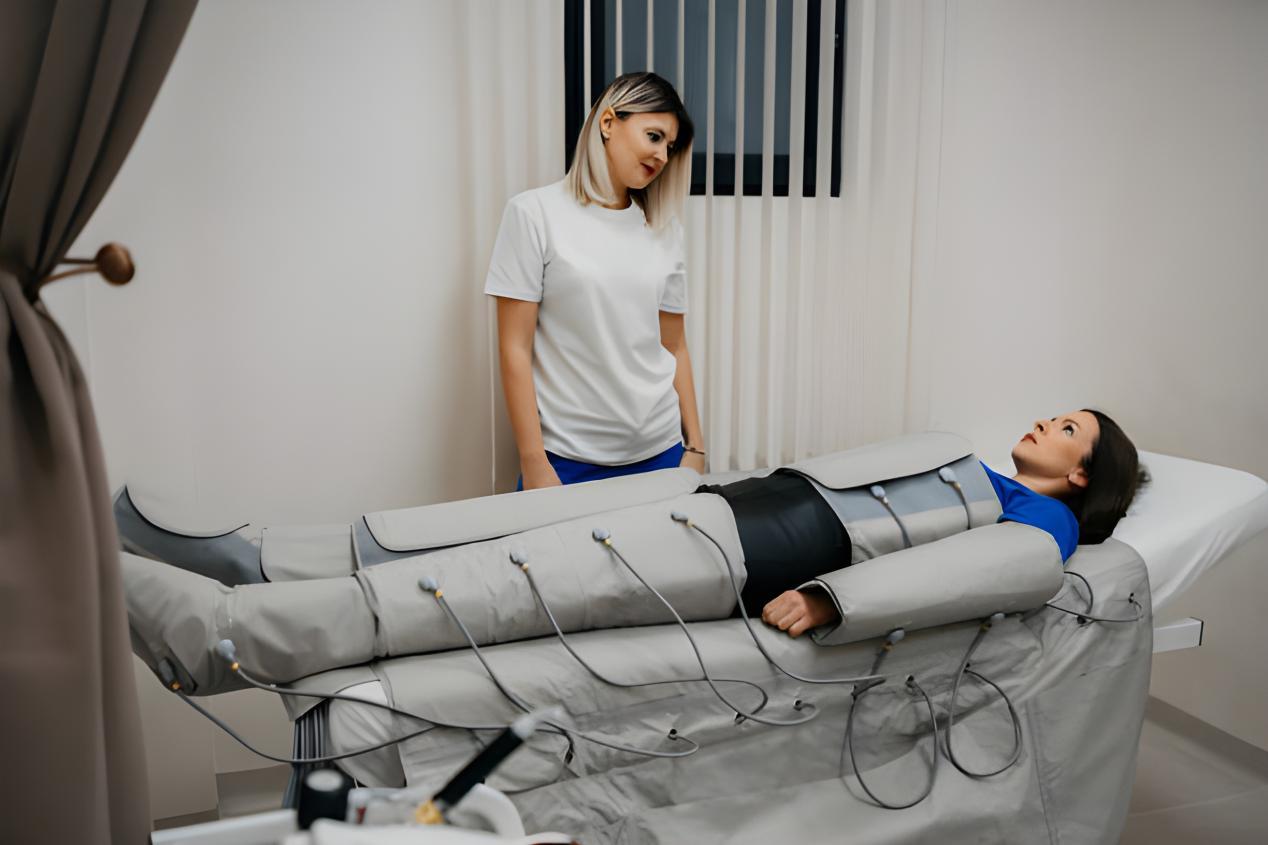
Proper blood circulation is essential for good health and wellness. It impacts everything from nutrient delivery and waste removal to energy levels and immune function. However, many individuals struggle with poor circulation due to factors such as sedentary lifestyles, aging, or specific medical conditions. At Merse Wellness Spa, we understand the critical role that effective blood circulation plays in overall health. Join us as we uncover the transformative potential of this innovative therapeutic approach. Among various methods to enhance circulation, compression therapy has emerged as a prominent approach, widely adopted in both clinical settings and home care. This non-invasive treatment method not only promotes better blood flow but also enhances overall health, making it an invaluable asset in wellness routines.
Table of Contents
ToggleCompression therapy involves the use of specialised garments or devices that apply controlled pressure to various parts of the body. This pressure supports the veins and arteries, promoting effective blood flow and reducing the risk of various circulatory issues. The benefits are manifold, making it a popular choice for individuals seeking to enhance their well-being.;
When compression is applied, it helps to:;
The effectiveness of compression therapy lies in its ability to create graduated compression. This means that the pressure is highest at the extremities (like the ankles) and gradually decreases as it moves up the leg. This gradient facilitates the upward flow of blood towards the heart, counteracting the forces of gravity that can hinder venous return.;
Compression therapy offers a range of health benefits that significantly enhance blood circulation and improve overall well-being. In the following sections, we will explore the specific benefits of compression therapy on blood circulation and its positive impact on daily life.;
Chronic venous insufficiency (CVI) and varicose veins are common conditions that arise from poor venous circulation. By applying controlled pressure, compression garments can help prevent the progression of venous disorders, alleviate symptoms, and improve quality of life.;
Athletes have increasingly adopted compression therapy as part of their training and recovery routines. The benefits include:;
Pregnant individuals often experience changes in circulation due to increased blood volume and pressure on pelvic veins. Compression stockings can provide relief from swollen legs, reduce the risk of developing varicose veins, and improve overall comfort during pregnancy.;
After surgery, particularly orthopaedic procedures, patients may face circulation challenges due to immobilisation and swelling. Compression therapy is often recommended to prevent deep vein thrombosis (DVT) and to promote faster healing by improving blood flow.;
Lymphedema, a condition characterised by localised fluid retention and tissue swelling, can be effectively managed through compression therapy. By providing consistent pressure, compression garments facilitate lymph drainage and help prevent fluid accumulation, significantly improving the patient’s quality of life.;
Enhanced circulation contributes to overall well-being by reducing symptoms associated with poor circulation, such as fatigue, discomfort, and cold extremities. Many individuals report feeling more energetic and comfortable after incorporating compression therapy into their daily routines.;
Compression therapy can be administered through various types of garments, each designed for specific needs and conditions:;
While compression therapy offers numerous benefits, it is essential to approach it with caution:;
At Merse Wellness Spa, we’re dedicated to providing expert compression therapy services that meet your individual needs. Compression therapy, one of our specialised services, offers a scientifically backed method to enhance blood flow, alleviate discomfort from prolonged standing or sitting, and aid in recovery for athletes.;
Incorporating compression therapy into your wellness routine can significantly improve blood circulation and overall health. From managing chronic venous disorders to enhancing athletic performance, the benefits are clear. With the right guidance and proper application, compression therapy can be an effective tool in promoting optimal circulation, enhancing recovery, and improving quality of life. Whether you’re an athlete, a busy professional, or someone seeking to enhance your wellness, our expert team at Merse Wellness Spa is here to help. Get in touch with us today to learn more about how compression therapy can benefit you. Experience the positive changes in your circulatory health and overall well-being.;
Compression therapy is effective for conditions such as chronic venous insufficiency, lymphedema, and varicose veins.
It’s recommended to wear them for several hours daily, especially if you are sedentary for long periods.
Generally, compression therapy is safe. However, discomfort or skin irritation can occur if the garments are too tight.
Yes! Compression wear is popular among athletes for its benefits in performance and recovery.
While most people can benefit, those with certain medical conditions should consult a healthcare professional before use.
Subscribe to receive exclusive discounts, updates & more!
Merse Wellness Spa, All Rights Reserved, Copyright 2024